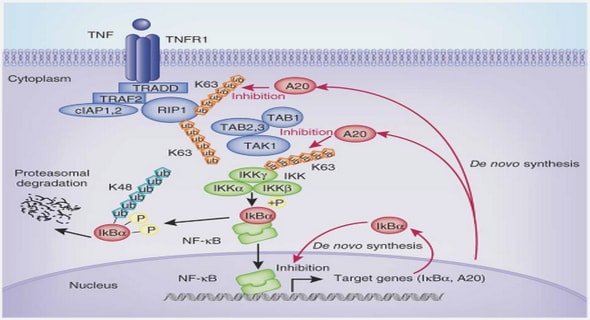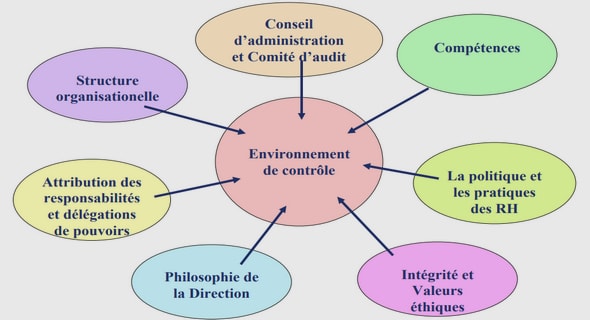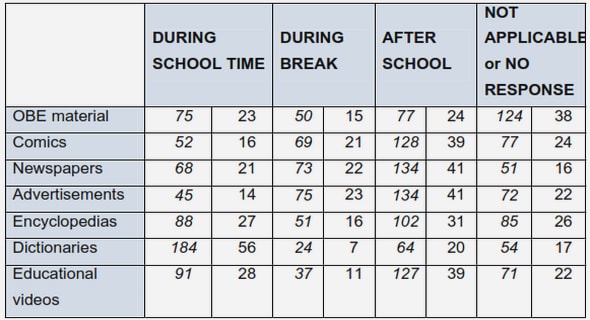Get Complete Project Material File(s) Now! »
Definition of permanently well-mixed sWEC and seasonally stratified nWEC
Figure 10a shows the difference between the surface temperature and the temperatures recorded along the CTD profiles (dTMP) at the fixed station E1 from January 2011 to December 2013. The dTMP revealed the thermal stratification periods of the water column and width of the MLD at E1. On figure 10b, we computed SST anomalies (dSST) from the difference between SST and mean SST for each Roscoff-Plymouth bimonthly transects. During spring, the transition between negative and positive dSST in the nWEC corresponded to the onset of stratification at E1, whereas, during fall, the reverse transition fitted with the breakdown of water column stratification (Vertical black lines on Figure 10). From spring to fall, negative dSST corresponded to the coolest waters of the sWEC compared to the nWEC and positive dSST corresponded to the nWEC waters. The highest positive and negative dSST values were observed during summer when the SST differences between nWEC and sWEC were the most marked.
Based on these temperature anomalies, we distinguished two main hydrographical provinces in the WEC: the seasonally stratified waters of the nWEC (49.40°N-50.20°N) and the permanently well-mixed waters of the sWEC (48.80°N-49.40°N). These two provinces were seasonally separated by a thermal front (horizontal black lines on Figure 10b), which oscillated around the latitude of 49.40°N as previously described by Pingree and Griffiths (1978). In the following sections, references to nWEC and sWEC will be based on the SST anomaly distinguished on Figure 10b.
Surface distributions of DO%, Chl-a and nutrients
In nWEC, winter values of DO% were close to atmospheric equilibrium in a homogeneous water column (Figure 8c and 9c and Table 3). Hydrographical conditions and the low winter irradiance did not allow phytoplankton development and Chl-a values remained low (< 1 μg L-1) during winter (Figure 8d and Table 3). Nutrients concentrations reached their maxima during winter thus constituting the winter nutrients stocks. Winter nutrients concentrations ranged from 5 to 10 μmol L-1, 3 to 6 μmol L-1 and 0.3 to 0.6 μmol L-1 for NO3 -, PO4 3- and SiO4 -, respectively (Figure 11 and Table 3). Chl-a started to increase during March 2011 and 2012 in nWEC to reach values higher than 3 μg L-1 associated to DO oversaturation around 120% during spring. In 2011 and 2013 the first spring phytoplankton blooms, characterized by these higher Chl-a values, were concomitant with the start of stratification, whereas in 2012 the spring bloom started one and a half month before the start of stratification observed at the fixed station E1 (Figure 10a). NO3 -, PO4 3- and SiO4 – concentrations decreased drastically at the start of phytoplankton blooms and the winter stocks were totally (NO3 -) or partially (PO4 3-, SiO4 -) depleted one to two month after. In 2011, the productive period was characterized by an important spring bloom (Chl-a > 3μg L-1), which occurred firstly in the northern part of the nWEC in April and one month later in the southern part of the nWEC, with associated surface DO% values around 115%. In the following months, surface water Chl-a decreased down to 1 μg L-1, whereas DO% remained above atmospheric equilibrium. Around mid-September 2011, a late phytoplankton bloom occurred between 49.7°N and 50.2°N with Chl-a reaching 2 μg L-1. The DO% started to decrease towards atmospheric equilibrium before this phytoplankton bloom, but increased back up to 105% during the bloom. During October and early November, after the breakdown of the stratification, Chl-a fell below 1 μg L-1 and DO% reached minimum values (between 90% and 100%), before increasing back up to atmospheric equilibrium with rehomogenization of the water column during winter. At the same time we observed the maximum of NO2 -, while the other nutrients started to increase (Figure 11) before reaching their annual winter maxima, thus closing the annual cycle. In 2012, we observed a spring phytoplankton bloom from April to June with Chl-a values higher than 3 μg L-1 and associated surface DO% of 115% to 120%, followed by low surface values of Chl-a and DO% values down to 105%. In August 2012 an intense summer phytoplankton bloom occurred with Chl-a values up to 5μg L-1 and associated DO% over 130%. The mechanisms of this bloom development at short time-scale will be discussed in details in Chapter 3. In 2013, the spring phytoplankton bloom started in May in the northern part of the nWEC and in June in the meridional part of the nWEC with associated maximal values of Chl-a and DO% of 4 μg L-1 and 120%, respectively. During summer 2013, Chl-a values remained low (< 1 μg L-1) and DO% remained above the atmospheric equilibrium (around 105%). A late summer phytoplankton bloom marked by Chl-a values of 2 μg L-1 occurred prior to the breakdown of stratification, surface DO% remained relatively low with average values of 105%. The dynamics of nutrients during the productive period were similar as in 2011, and NO2 – maximal values were observed just after the re-homogenization of the water column in early fall.
Surface distributions of CO2 system parameters
TA values across the WEC ranged from 2169 μmol kg-1 to 2357 μmol kg-1 (Figure 12b and Table 3). The lowest TA values were observed near the English coast associated with freshwater inputs (SSS below 35.00). During winter, the mean TA along the transect was 2339 μg kg-1. North of 49.6°N, a linear relationship between TA and SSS was derived (n=465, r²=0.78, RMSE=6.5 μmol kg-1), suggesting a strong control of SSS on TA, whereas no relationship was found for these parameters in the sWEC. In 2011, we obtained a significant linear relationship between SSS and TA over the whole WEC (n=355, r²=0.64, RMSE=6.5 μmol kg-1) and we observed the highest mean TA values in the entire WEC from April to August. In 2012 the highest TA values were found across the WEC from January to July and corresponded to the highest SSS (Figure 8b and 12b), but no significant linear relationship was found between SSS and TA. Inversely, in 2013 we observed high TA and low SSS values during spring in the sWEC. Figure 12d shows the distribution of normalized TA (nTA) to a constant salinity of 35. The nTA variability presents roughly the same pattern as TA over the three years of our study with lower concentrations. Interestingly in 2011, high Chl-a values during the productive period were always followed by an increase of nTA. From the end of July to fall 2011, TA and nTA decreased to TA values ranging from 2330 to 2340 μmol kg-1 and to nTA values ranging from 2315 to 2330 μmol kg-1, except during two weeks after the late summer bloom in the northern WEC. The control of freshwater inputs vs phytoplankton blooms and biogeochemical processes on the spatio-temporal variability of TA is discussed in detailed in section 4.1.
Dissolved Inorganic Carbon
DIC distribution in the WEC (Figure 12a) followed a clear temporal dynamics. During winter, DIC concentrations were high with an average value of 2137 μmol kg-1, with lower DIC concentrations recorded near the English coasts associated to freshwater inputs. Maximum values of DIC (> 2140 μmol kg-1) were measured during winter (Table 3). During spring and summer, much lower DIC concentrations (< 2100 μmol kg-1) were recorded. DIC and Chl-a (and associated DO%) presented reverse and synchronous seasonal dynamics. In the nWEC we observed lower values of DIC than in the sWEC, with DIC decreasing at the start of the stratification and increasing back at the stratification breakdown. During the intense summer bloom in 2012 in nWEC, we recorded the lowest DIC value of 1908 μmol kg- 1. In sWEC, we observed an important decrease of DIC during spring 2011 with DIC values lower than 2070 μmol kg-1, whereas during the productive periods in 2012 and 2013 DIC values did not fall below 2090 μmol kg-1. The DIC values increased back during fall, firstly in the sWEC then in the nWEC, before reaching their winter maxima. The DIC distribution across the WEC showed marked latitudinal variability between sWEC and nWEC waters.
pH, calcite and aragonite saturation state of surface seawater
Figure 13 shows the spatial and temporal distribution of pH on the total scale, the calcite (ΩCa) and aragonite (ΩAr) saturation state of surface seawater between Roscoff and Plymouth from 2011 to 2013. These parameters were computed from TA, DIC, temperature, salinity and nutrients concentrations with the CO2SYS program (Pierrot et al., 2006) using the equilibrium constants proposed by Mehrbach et al. (1973), refitted by Dickson and Millero (1987) on the total pH scale, as recommended by Dickson et al. (2007). The computed values of pH from DIC and TA have uncertainty of ± 0.006 μatm (Zeebe and Wolf- Galdrow, 2001). Surface water pH ranged from 7.966 to 8.354 (Table 3), with an average value of 8.075. The surface waters of the WEC were always supersaturated (Ω > 1) with respect to calcite and aragonite, with Ω values ranged from 2.63 to 7.08 and from 1.66 to 4.57 for calcite and aragonite, respectively. We observed the highest pH, ΩCa and ΩAr values during the most intense phytoplankton blooms, particularly during summer 2012 in nWEC, and the lowest values during fall when DIC and pCO2 were the highest. The distribution of these carbonate system parameters was closely related to the distribution of the DIC and pCO2, described in Sections 3.3.2. and 3.3.3, with high pH, ΩCa and ΩAr values when low DIC and pCO2 values were recorded.
Table of contents :
Chapter 1: Introduction
1. Climate change
2. The global and the oceanic carbon cycle
2.1 The global carbon cycle
2.2 The oceanic carbon cycle
3. Dissolved inorganic carbon in seawater
3.1 The carbonate system
3.2 Inorganic carbon dynamics
3.3 Air-sea CO2 fluxes
4. Continental shelves
5. Thesis objectives
6. Thesis outlines
References
Chapter 2: Seasonal and latitudinal variability of the CO2 system in the western English Channel based on Voluntary Observing Ship (VOS) discrete measurements over three contrasted years.
Abstract
1. Introduction
2. Material and Methods
2.1 Surface measurements on the VOS line
2.2 Water column measurements at fixed stations
2.3 Calculation of the partial pressure of CO2 and air-sea CO2 fluxes
2.4 Calculation of the Net Ecosystem Production
3. Results
3.1 Hydrographical setting
3.2 Surface distributions of DO%, Chl-a and nutrients
3.3 Surface distributions of CO2 system parameters
4. Discussion
4.1 Latitudinal dynamics of the carbonate system in the WEC
4.2 Processes controlling the seasonal pCO2 variability
4.3 Air-Sea CO2 exchange
4.4 Estimation of Net Ecosystem Production at the fixed stations
5. Concluding remarks
References
Chapter 3: Spatio-temporal dynamics of biogeochemical processes and air-sea CO2 fluxes in the Western English Channel based on two years of FerryBox deployment.
Abstract
1. Introduction
2. Material and Methods
2.1 The VOS line and the FerryBox system
2.2 Bimonthly discrete sampling
2.3 CO2 system and air-sea CO2 fluxes calculation
3. Results and discussion
3.1 Reliability of the FerryBox system
3.2 Observation of the physical structure of the WEC
3.3 Inter-annual dynamics of phytoplankton blooms
3.4 Short time-scale dynamics of pCO2 and air-sea CO2 fluxes
4. Concluding remarks and perspectives
References
Chapter 4: Dynamics of air-sea CO2 fluxes in the north-west European shelf based on Voluntary Observing Ship (VOS) and satellite observations.
Abstract
1. Introduction
2. Study area
3. Material and Methods
3.1 FerryBox datasets
3.2 Satellite and other environmental data
3.3 Development of pCO2 algorithms
3.4 SOCAT data
3.5 Calculation of air-sea CO2 fluxes
4. Results and discussion
4.1 Performance of MLR
4.2 Spatial and temporal extrapolation of the algorithms
4.3 Seasonal variability of biogeochemical properties in stratified vs. permanently well-mixed systems
4.4 Inter and multi-annual variability of pCO2 and air-sea CO2 fluxes
5. Concluding remarks and perspectives
References
Chapter 5: Summary, concluding remarks and perspectives
1. Summary
1.1 Three years of bimonthly measurements
1.2 High frequency measurements
1.3 Development of pCO2 algorithms and air-sea CO2 flux in WEC, CS and IS over a
decade
1.4 Conclusion
2. Concluding Remarks and Perspectives
2.1 Time-scale discrepancies and other uncertainties of the CO2 system in coastal seas
2.2 Towards global coastal carbon observatories
2.3 Long-term time series and climate change
References


